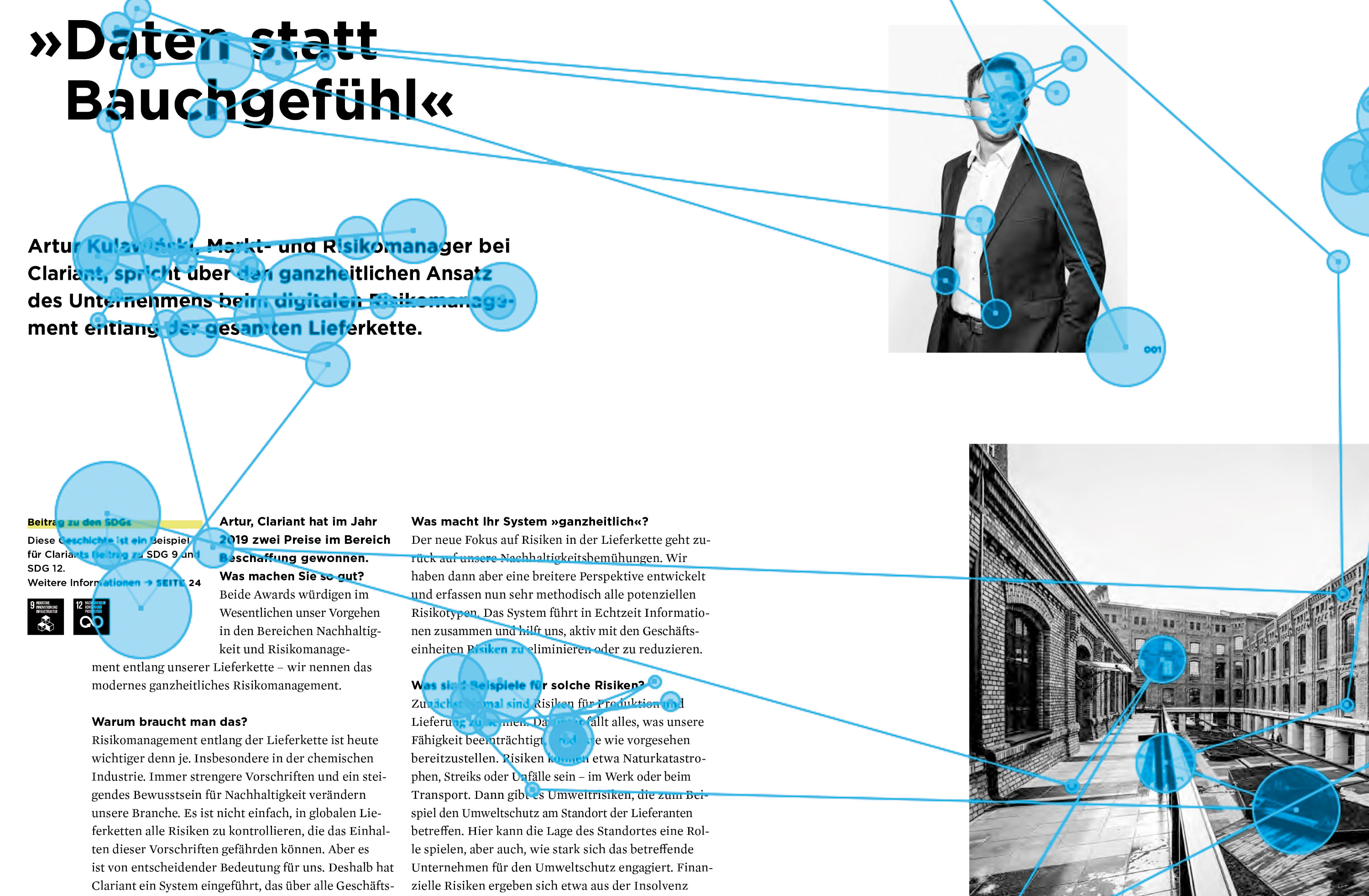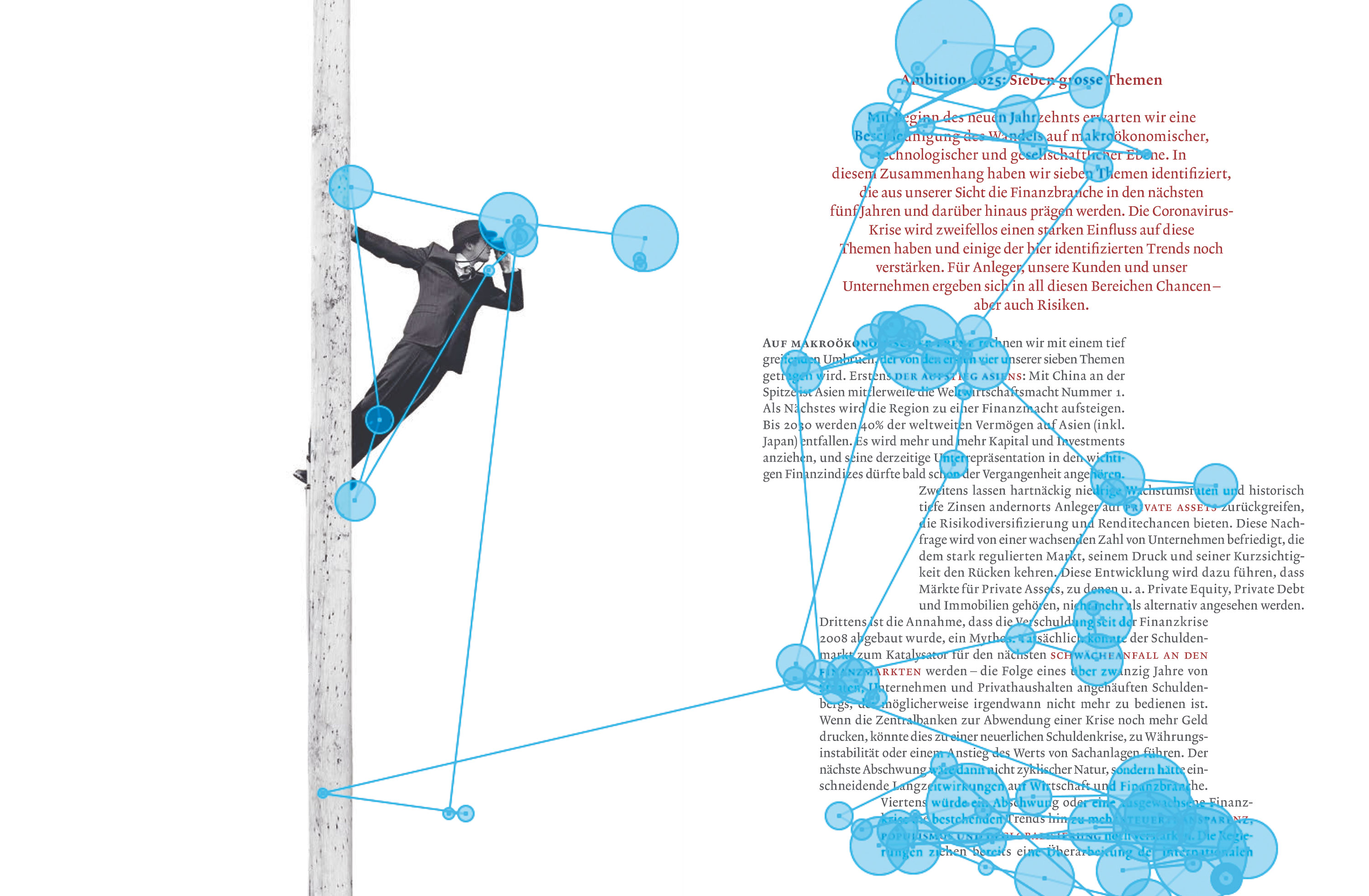Writing with impact: good print and web content.

Services of technology companies such as Google and all the information we’re flooded with have radically changed our reading behaviour. We don’t have much time, and information has to be available quickly. This applies to online readers, and now also to people reading in print. How do you produce successful content for digital and print media? You need to be concise, structured and creative.
Ever since it’s been possible to use a search engine to find any piece of information in mere seconds, our attention span has been getting shorter. While reading a print text is usually a conscious decision, when we’re online we want rapid results. This poses new challenges for people writing texts. If you don’t captivate your reader within seconds, you’ve lost.
The digital reader:
- Is in a hurry
- Looks for information selectively
- Skims texts rather than reading them
- Scans texts for specific key words
- Needs orientation
When we’re online we mostly read what we’re looking for; otherwise we click on to the next thing. Online texts have to be scannable rather than providing the kind of linear reader guidance that’s traditional for print copy. The reader must be able to dip in and out without losing the thread.
Information-seeking readers also scan print texts
These days people looking for information also read print material through online eyes. They skim texts rather than reading them from start to finish. This means that authors are basically dealing with impatient, goal-oriented readers – both on screen and on paper.
Experience-seeking readers are different
An exception is the experience-seeking reader. Readers seeking an experience take their time and read texts right to the end. You’ll find them immersed in the newspapers on a Sunday morning or perusing a magazine over their coffee. These people expect well-researched, well-founded content, and don’t mind longer, more involved texts. They want to be challenged linguistically by satisfying content.
How do you write for information-seeking readers?
Whether they’re for web or print, good texts quickly get to the core message. Start out with key points that are interesting and arouse curiosity. Leave insignificant information until the end. Meet the reader’s information needs as efficiently as possible. And optimise the way the content is presented so it’s easy to take in and process.
Adopt a clear style of writing
- Write in the language of your audience.
- Address the reader directly.
- Express yourself briefly and concisely.
- Avoid filler words.
- Formulate actively rather than passively.
Make it easy for your reader
- Build keywords that are relevant to your reader into the text.
- Include the main keyword in the header.
- Write meaningful subheads.
- Answer the classic w questions (who, what, when, where, why?), if possible at the beginning.
- Keep it to one thought per paragraph.
Provide rapid orientation
- Divide your text into compact paragraphs.
- Use lists and bullet points.
- Highlight important content.
- Use information boxes.
- Break up the text with pictures, infographics and tables.
Tips on search engine optimisation
A crucial difference between online and print texts is SEO (search engine optimisation). A good search engine ranking is top priority for a successful text.
Always focus on strategic keywords Before you write, research the keywords for this topic that are relevant to your audience. Keyword tools can help. Build selected keywords intelligently into your text, also using synonyms. All these points will help in terms of search engine optimisation.
Also good in terms of SEO:
- Moving visuals such as videos, animations and GIFs
- Meaningful links to further information
- Reader comments
Content remains king
Never lose sight of the fact that whatever SEO tricks you use, a good text is written for people. Google rewards relevant, helpful content with a better ranking. Google favours pieces that are informative, useful, credible, high-quality, appealing and accurate. Also offer your reader options for responding to get into dialogue with them.
Communications and content strategies.
Find out more
We cover the entire spectrum from factual information to gripping stories. Our solutions are always built around content-driven communications. We develop topics and content embedded in your corporate and brand strategy. For us, storytelling isn’t an end in itself; it’s something we use to amplify your strategic message. We choose what we write to really appeal to your audience.
References
Examples of copy for information-seeking readers
Insight (PDF)
Finnova AG customer magazine
Flux (PDF)
ewl energie wasser luzern customer magazine
Examples of copy for experience-seeking readers
Forum (PDF)
Alfred Müller AG customer magazine
Examples of online copy
Blog Lyreco Switzerland AG
Blog Debrunner Acifer AG
Online magazine approach
Mobility Neo
More information
Monika Mingot
Head of content
T +41 44 268 12 22
monika.mingot@linkgroup.ch





